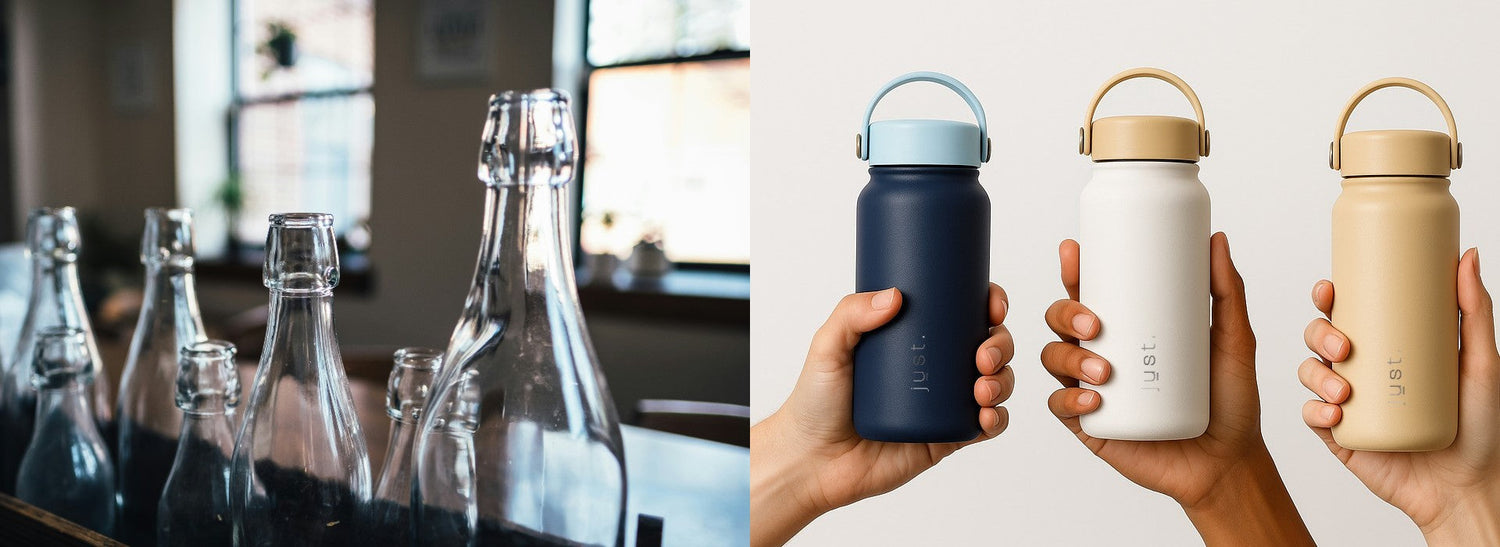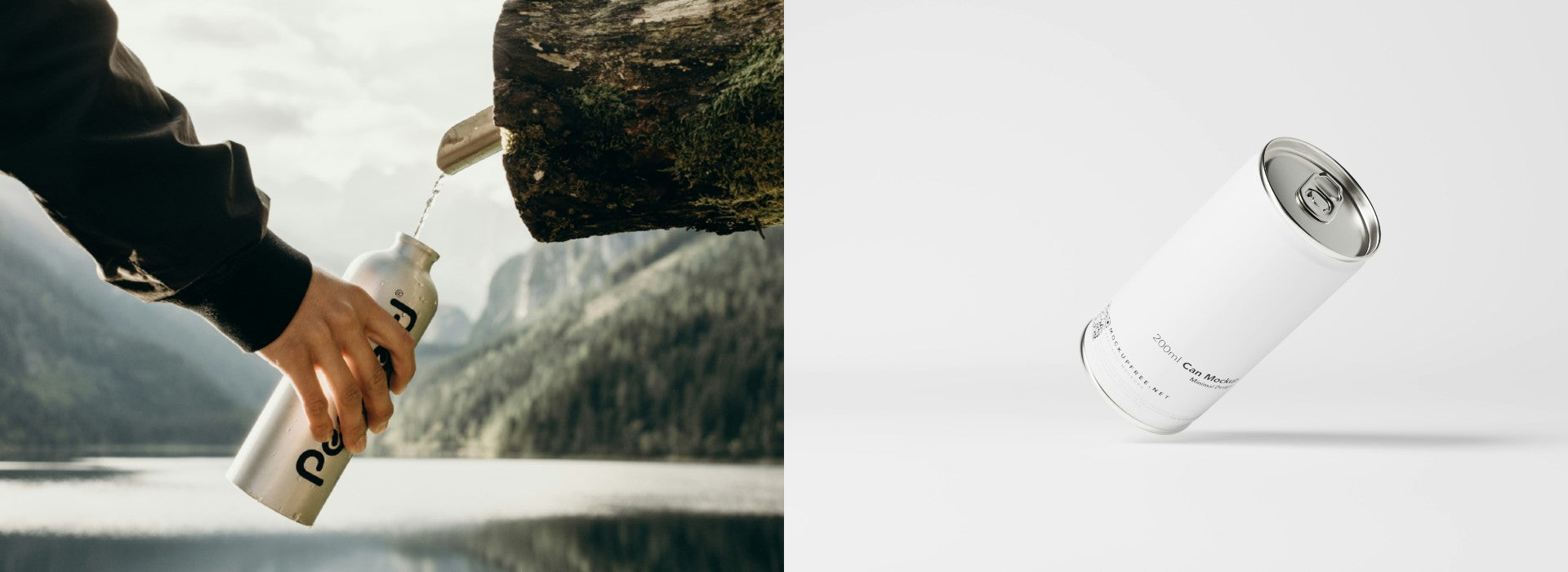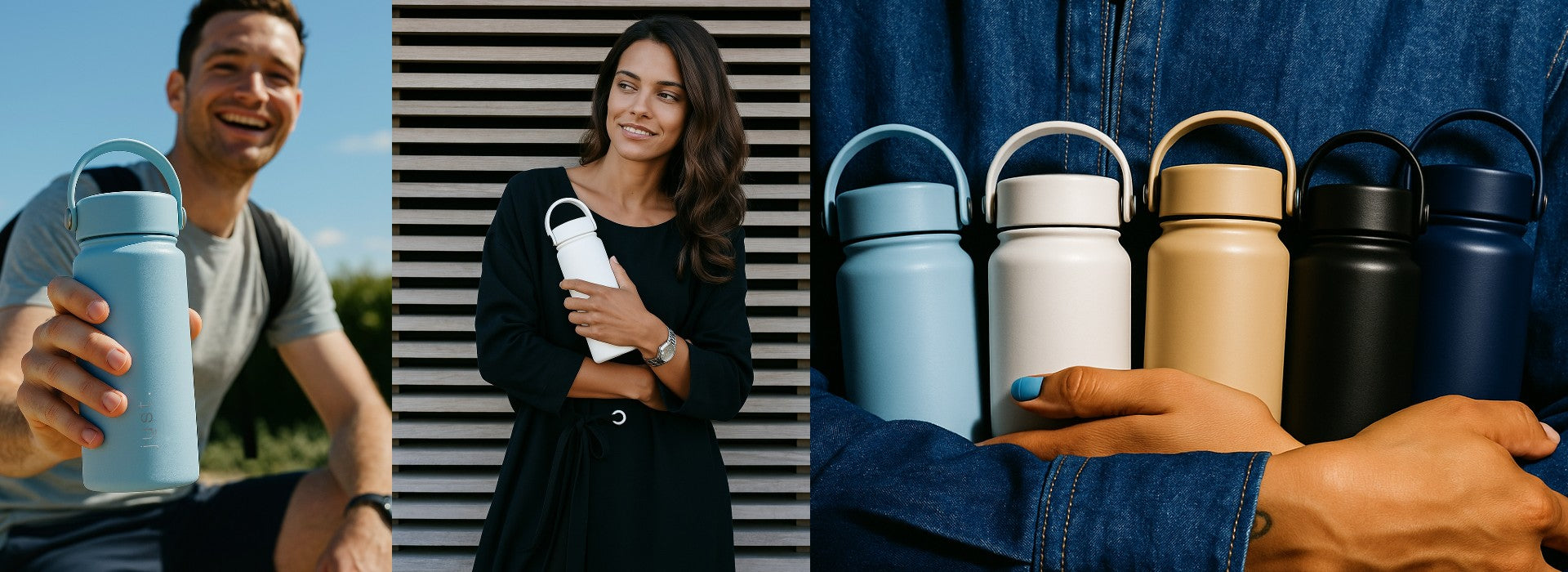Water bottles have been around for centuries, with the first known examples dating back to ancient Egypt and Greece. In the past, water bottles were typically made of materials such as glass or ceramic, which were heavy and fragile.
As a result, they were not very practical for everyday use and were mainly used for transporting water over short distances.
When was the first water bottle invented?
The practice of bottling and transporting water has ancient roots so it's hard to say exactly when the first water bottle was invented.
Historical evidence shows that early human civilisations developed various kinds of vessels to carry water- ranging from animal skins to clay pots. However, it became a formalised industry in the United Kingdom in the early 17th century.
The first recorded instance of water bottling occurred at the Holy Well (a pool of water which was thought to have healing properties) in 1622, located in the United Kingdom with people from various regions making religious pilgrimages to the site.
Recognising the commercial potential, entrepreneurs began bottling the water from the Holy Well to sell to those who could not make the journey.
The technology for bottling water during this period was rudimentary compared to today's standards. Glass bottles sealed with cork were the primary containers used.
These bottles were then transported by horse-drawn carriages, limiting the reach of distribution. However, the practice laid the groundwork for the modern bottled water industry.
From glass and ceramic to plastic: the evolution of the water bottle
The transition from heavy, fragile materials such as glass and ceramic to lightweight and durable plastic has had a significant impact on the way that people use and consume water.
Prior to the 20th century, water bottles were mainly made of materials such as glass or ceramic, which were heavy and easily breakable. As a result, they were not very practical for everyday use and were mainly used for transporting water over short distances.
The introduction of plastic in the 20th century revolutionized the water bottle industry. Plastic bottles were lightweight, durable, and inexpensive to produce, making them the preferred choice for most consumers.
The widespread use of plastic water bottles has allowed people to easily carry water with them wherever they go, making it more convenient to stay hydrated throughout the day.
As well as the practical benefits of plastic water bottles, the shift to plastic has also had economic and cultural impacts. The production and sale of plastic water bottles have created new industries and job opportunities, and the popularity of water bottles has contributed to the development of global water culture.
Today, it is common to see people carrying water bottles with them in many different settings, from the workplace to the gym to outdoor activities.
Overall, the transition from heavy, fragile materials to lightweight and durable plastic has greatly impacted the way that people use and consume water, making it more convenient and accessible.
However, the widespread use of plastic water bottles has also had significant environmental consequences, which has led to a shift towards more sustainable alternatives such as stainless steel.
The negative impacts of plastic water bottles: pollution, climate change, and harm to marine life
The use of plastic water bottles has had significant negative impacts on the environment and the oceans. One major concern is pollution, as billions of plastic bottles end up in landfills or oceans each year.
In landfills, plastic bottles can take hundreds of years to decompose, leading to long-term pollution of the environment. In the oceans, plastic bottles and other debris can harm marine life and disrupt ecosystems.
Fish, birds, and other animals can become entangled in plastic or mistake it for food, leading to injury or death.
The production of plastic water bottles also has significant environmental consequences. The production of plastic requires large amounts of fossil fuels, which contribute to climate change and other environmental problems.
In addition, the transportation of plastic bottles from the point of production to the point of sale also requires the use of fossil fuels, adding to the carbon footprint of these products.
Another negative impact of plastic water bottles is their potential to leach chemicals into the water. Some types of plastic, such as polycarbonate, contain a chemical called BPA, which has been linked to negative health effects.
While many water bottles now claim to be BPA-free, there are concerns about other chemicals that may be present in plastic bottles and the potential long-term impacts on human health.
Overall, the negative impacts of plastic water bottles on the environment and the oceans are a major concern. To reduce these impacts, it is important to reduce our reliance on plastic water bottles and adopt more sustainable alternatives, such as stainless steel water bottles.
The rise of stainless steel water bottles: a sustainable alternative
In light of these negative impacts, it is important to reduce our reliance on plastic water bottles and adopt more sustainable alternatives. Stainless steel water bottles are a great option, as they are durable, reusable, and environmentally friendly.
By using a stainless steel water bottle instead of a plastic one, you can help to protect the environment and the oceans, while also reducing your own carbon footprint.
In recent years, there has been a shift towards more sustainable options for water bottles, such as stainless steel. Stainless steel water bottles are durable, reusable, and environmentally friendly, as they can be used for many years before needing to be replaced.
They are also safe and non-toxic, as they do not contain chemicals such as BPA that can leach into the water.
As more and more people become aware of the environmental impact of plastic water bottles, the demand for sustainable alternatives such as stainless steel has increased.
Brands such as Just Bottle have emerged, offering a wide range of high-quality stainless steel water bottles that are perfect for everyday use.
Choose a stainless steel water bottle to protect the environment and the oceans
To sum up, the history of the water bottle has evolved over time, with materials and designs changing to meet the needs of consumers. Today, the trend is towards more sustainable options such as stainless steel, which offer numerous benefits for both the user and the environment.
FAQ's
When was the first water bottle invented?
Water-carrying vessels date back to ancient civilisations like Egypt and Greece, but the first recorded instance of water bottling was in 1622 at the Holy Well in the United Kingdom. Water was bottled in glass containers sealed with corks and sold to those who couldn’t make a pilgrimage to the site.
Why did water bottles shift from glass to plastic?
Glass and ceramic bottles were heavy and fragile, making them impractical for everyday use. With the rise of plastic in the 20th century, bottles became lighter, more durable, and cheaper to produce - revolutionising hydration habits and accessibility worldwide.
What are the environmental problems with plastic water bottles?
Plastic bottles contribute to pollution, climate change, and harm to marine life. They take hundreds of years to decompose and often end up in oceans, where they can injure or kill wildlife. Plastic production also consumes fossil fuels and can leach harmful chemicals into drinking water.
Why are stainless steel water bottles considered more sustainable?
Stainless steel bottles are reusable, durable, and free from toxic chemicals like BPA. They help reduce plastic waste, lower your carbon footprint, and last for many years - making them a safer and more eco-friendly alternative to single-use plastic bottles.







